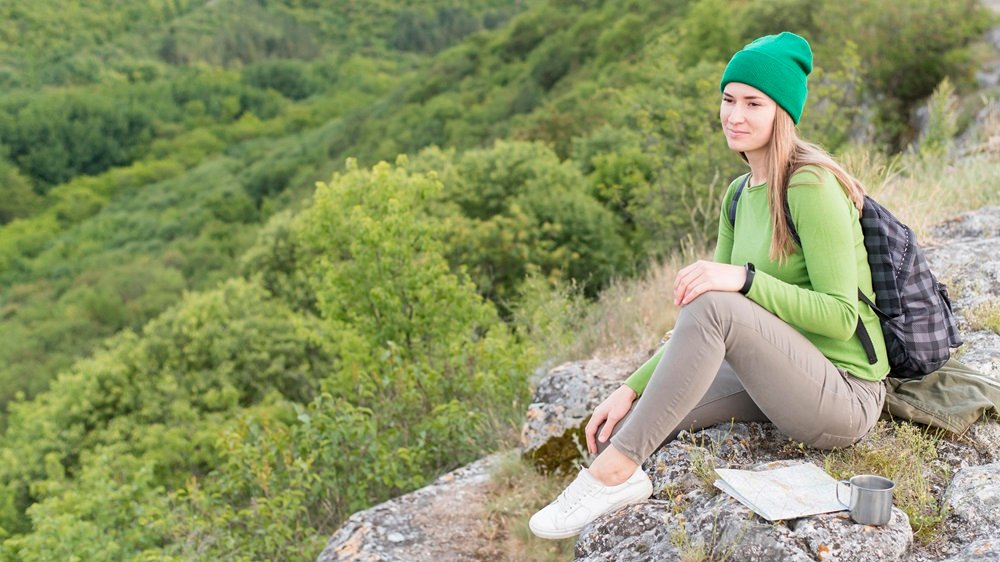When planning a multi-day hiking trip, the clothes you wear can make or break your experience.
The right rei womens hiking pants and other technical apparel can transform an uncomfortable journey into an enjoyable adventure.
Modern fabric technology has revolutionized hiking gear, especially for women who often face unique challenges on the trail.
Your body deserves fabric that works as hard as you do. Let’s explore how smart textile choices can keep you comfortable mile after mile.
The Science Behind Comfort on the Trail
Fabric technology has come a long way from the days of heavy cotton and scratchy wool. Today’s performance textiles are engineered specifically to address the needs of active outdoor enthusiasts.
Moisture management is perhaps the most crucial function of hiking apparel. When you’re climbing steep terrain with a loaded pack, your body generates heat and sweat.
Without proper wicking fabrics, that moisture stays trapped against your skin, leading to chafing, blisters, and even dangerous drops in body temperature when you stop moving.
Advanced synthetic fabrics pull moisture away from your skin to the outer layer of the fabric where it can evaporate.
This keeps you dry and regulates your body temperature, whether you’re pushing up a mountain pass or setting up camp.
Women-Specific Design Considerations
Women’s bodies have different needs when it comes to hiking apparel. Smart fabric placement can address female-specific pressure points and movement patterns.
Your hiking experience shouldn’t be compromised by gear designed for someone else’s body.
| Feature | Benefit | Technology |
| Four-way stretch panels | Freedom of movement in hips and thighs | Nylon/spandex blends |
| Articulated knees | Comfortable stride on steep ascents | Strategic fabric mapping |
| Moisture-wicking waistband | Prevents irritation under pack straps | Quick-dry polyester microfiber |
| UPF protection | Guards against sun damage | Chemical treatments or tight weaves |
Durability Meets Lightweight Design
The holy grail of hiking fabric is finding the perfect balance between durability and weight. Nobody wants to carry extra ounces on a long trek, but your gear needs to withstand rough conditions.
Modern ripstop fabrics use a special reinforcing technique that helps prevent tears from spreading. Abrasion-resistant panels strategically placed at high-wear areas like the knees and seat extend the life of your hiking pants without adding significant weight.
These innovations mean you can pack lighter without sacrificing reliability—crucial when every ounce matters on a multi-day journey.
Weather Adaptability on Long Hikes
On extended treks, you’ll likely face changing weather conditions. Smart fabric choices help you adapt without carrying your entire wardrobe.
DWR (Durable Water Repellent) treatments cause water to bead up and roll off rather than soaking through, buying you precious time in unexpected showers. Meanwhile, quick-drying fabrics mean you won’t stay wet for long, reducing your risk of hypothermia in changing conditions.
Being prepared doesn’t always mean packing more—sometimes it’s about packing smarter.
For hot weather sections, look for fabrics with UPF protection and ventilation zones. These features protect you from harmful UV rays while allowing heat to escape, preventing overheating on exposed trails.

Sustainable Fabric Innovations
Today’s hiking community is increasingly environmentally conscious. Fortunately, sustainable fabric options have improved dramatically.
Recycled polyester made from plastic bottles performs just as well as virgin materials while reducing waste. Plant-based fabrics like Tencel provide excellent moisture management with a smaller environmental footprint.
Bluesign®-certified fabrics ensure that textiles meet strict environmental standards throughout their production process, from raw materials to finished product.
Caring for Technical Fabrics
To get the most from your high-performance hiking apparel, proper care is essential. Many technical treatments like DWR need occasional refreshing.
Avoid fabric softeners, which can clog the microscopic pores that make wicking fabrics effective. Instead, use technical wash products specifically designed for outdoor gear.
Finding Your Perfect Fit
The best fabric technology in the world won’t help if your gear doesn’t fit properly.
When shopping for hiking pants, consider how they’ll move with you on varied terrain.
Look for adjustable features like drawcords and gussets that accommodate your body’s changes during long hikes.
Remember that proper fit minimizes chafing—a small irritation that can become a major problem over many miles.
